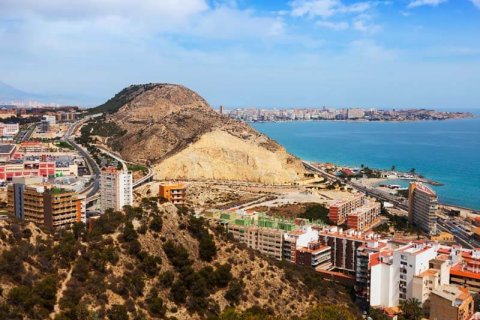
In April 2022, the Valencian Community recorded an increase in the average price of secondary market houses to 1,421 euros per sq.m. This figure is 1.71% higher than a month earlier, in March, and is a record in Spain for the specified period. In turn, the Alicante region showed the second largest growth in Spain, rising by 2.16% in percentage terms at once.
Both regions also took the first places in annual growth. Alicante showed an increase of 10.41%.
As reflected in the monthly real estate prices report of Pisos.com, the regions of the Valencian Community and the Balearic Islands can be located on the same level with these leaders. The cost per square meter in the latter reached 3,363 euros. The rating of the cheapest regions is headed by Extremadura with 791 euros per sq.m.
As for the secondary housing market in Spain, the average market price in April 2022 was fixed at 1,906 euros per sq.m - a monthly increase of 0.72%.
In all the capitals of the Valencian provinces, prices for this category of housing increased during the month from March to April 2022. Alicante ranked 10th in the country with a 1.58% price increase.
In annual terms, all the capitals of Valencia also grew. In this dimension, Alicante topped the national growth ranking, showing an increase in value by 14.24% since April 2021.
Another city of Valencia, Castellon, ranked 9th among the provincial capitals of Spain in terms of housing affordability with a price per square meter at 1,271 euros. The price in the city of Alicante is around 1,851 euros, and in the city of Valencia - 2,132 euros. They are on the spectrum of more expensive places to buy residential real estate.
Inflation and the impact on the market
Due to the high growth in energy prices, inflation in Spain has reached record high levels, which naturally affects the residential real estate market. However, this effect of inflation is much more restrained than in some other areas of the Spanish economy.
Ferrand Font, Director of Research at Pisos.com, indicates: «Although, buying real estate on the secondary market today will cost more than a year ago, the price growth for it is lower than the general price index in Spain».
Euribor [the average interest rate on interbank loans in the EU] has already returned to positive indicators in mid-April 2022, after it had been in the negative zone since 2016.
Many Spaniards still remember how the size of loan repayments at some point became impossibly high, which in turn led to an increase in the number of toxic debts for which there was no one to pay.
